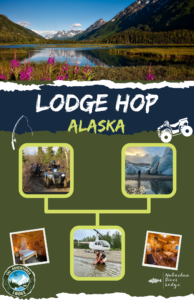Understanding the Northern Lights Phenomenon
Witnessing the Northern Lights
Tips for Capturing the Perfect Photo

Use a Tripod
Stabilizing your camera with a tripod is essential for long exposure shots, allowing you to capture the vibrant colors of the Northern Lights without blurriness, especially in low-light conditions.

Adjust Camera Settings
Set your camera to manual mode, using a high ISO (800-3200), a wide aperture (f/2.8 or lower), and a longer exposure time (10-30 seconds) to effectively capture the dynamic movement and brilliance of the auroras.

Scout Locations in Advance
Research and visit potential photography spots during daylight to find the best angles and compositions, ensuring you have a clear view of the sky and minimal light pollution for optimal Northern Lights photography.
Scientific Explanation
The enchanting phenomenon of the northern lights, or aurora borealis, arises from the dynamic interactions between solar winds and Earth’s magnetosphere. At the heart of this process are charged particles emitted by the Sun, traveling through space as solar wind. When these particles encounter Earth’s magnetosphere, they are funneled towards the polar regions due to the shape and structure of Earth’s magnetic field.

Upon approaching the polar atmospheres, typically near places like Skwentna, Alaska, these high-energy particles collide with gases in Earth’s atmosphere, primarily oxygen and nitrogen. This collision transmits energy to these atmospheric gases, which respond by emitting photons—the fundamental carriers of light. It’s these photons that generate the astonishing visual spectacle known as the northern lights.
The colors observed in the aurora borealis are directly influenced by the type of gas involved in the collision and the energy level of the impacting particles. Oxygen, for instance, can produce green or red lights—the former being the most common due to the specific energy levels released during collisions. Nitrogen, on the other hand, is responsible for purples, blues, and occasionally a deep, intense red. This spectrum of colors lends the northern lights their ever-changing, mesmerizing quality.
The variations in light displays are linked not only to the type of gas but also to the altitude at which the interactions occur. Oxygen collisions taking place around 60 miles above Earth typically produce the prevalent green light, while those occurring above 150 miles yield red hues. Nitrogen atoms generally emit blue and purple colors between 50 to 100 miles high. This interplay of factors endows each aurora sighting with its own unique beauty and complexity.
Understanding this scientific foundation enhances our appreciation of the northern lights near Anchorage, especially at settings like the Tal-Adventures Lodge, where individuals can marvel at this extraordinary and intricate light show against the backdrop of pristine Alaskan wilderness.
Optimal Viewing Conditions
Witnessing the northern lights near Anchorage and the surrounding areas, including Skwentna, Alaska, requires specific conditions to maximize visibility and enhance the overall experience. One of the paramount factors is the necessity for clear, dark skies. The phenomenon of the aurora borealis is most visible in environments devoid of artificial light, making rural locations far from urban centers ideal.
In Skwentna, the advantageous remoteness minimizes light pollution, giving viewers a pristine view of the mesmerizing light display. Observers should seek darkness as uninterrupted by city lights as possible. This entails planning visits to places like Tal-Adventures Lodge, offering strategic positioning for optimal stargazing and aurora viewing, away from any competing illuminations.
Another critical component to witness the northern lights in Alaska is the seasonal timing. The ideal window spans from late September through early April, when nights are longer and the skies are darker. This period offers the best chances for clear skies, enhancing the likelihood of observing the northern lights. The geomagnetic activity that fuels the aurora is typically more potent during equinoxes, making March and September particularly favorable months.
Weather plays a defining role as well. Skies must be free of heavy cloud cover to view the aurora borealis. Thus, constantly monitoring local weather forecasts for clear nights during the aforementioned months becomes crucial. For those planning a visit, leveraging services that predict aurora activity based on solar and geomagnetic conditions can significantly improve the odds of witnessing this celestial spectacle.
In essence, the optimal viewing conditions for the northern lights in Skwentna, Alaska necessitate clear, dark, and rural locations, aligning with the peak auroral seasons. Ensuring such conditions allows for a truly unforgettable experience, as you gaze up at the cosmic dance of lights in the Alaskan sky.
The northern lights, also known as the aurora borealis, hold profound cultural and spiritual significance for indigenous peoples in Alaska. The auroras have been an integral part of the indigenous worldview for centuries, woven into the fabric of their myths, legends, and spiritual practices. For many Alaska Native tribes, the northern lights are far more than a natural phenomenon; they are imbued with spiritual and mystical meanings that enrich their cultural heritage.

Among the Inupiat and Yupik people, one prevalent belief is that the aurora borealis represents the spirits of their ancestors playing a game of ball in the sky. This celestial activity is thought to be a reminder of the interconnectedness between earth and the spiritual realm. Similarly, some Athabascan tribes view the northern lights as a manifestation of dancing spirits, evoking both reverence and awe. These beliefs and narratives offer a framework through which the natural phenomenon is not only observed but also deeply felt and internalized.
In addition to these spiritual interpretations, the northern lights have also inspired practical knowledge and wisdom. Indigenous hunters and fishers have learned to read the lights as indicators of weather patterns and animal behaviors, integrating this understanding into their subsistence practices. This synthesis of spiritual and empirical knowledge underscores the holistic worldview of Alaska Native cultures.
For visitors seeking to witness the northern lights near Anchorage, particularly at the Tal-Adventures Lodge, understanding these cultural perspectives can greatly enrich their experience. Engaging with indigenous legends and beliefs adds a layer of depth to the visual spectacle, transforming it from mere observation to a more profound appreciation. By acknowledging and respecting the cultural significance of the aurora borealis, visitors can foster a deeper connection to the land and its people, enhancing their overall adventure in northern lights Alaska.
The optimal months to view the northern lights near Anchorage, particularly in Skwentna, Alaska, span from late September to early April. This period provides the most favorable conditions for aurora borealis sightings due to the extended hours of darkness and relatively clear skies prevalent during these months. Specifically, the winter months, peaking in December through February, offer the longest nights, which, coupled with the lower levels of light pollution found in remote locations such as the Tal-Adventures Lodge, give aurora enthusiasts the best chance to witness this celestial phenomenon.
Historical data supports this optimal viewing window as well. Studies have shown that aurora activity tends to peak around the equinoxes, making late September and March particularly promising for observing the northern lights. The magnetosphere’s interaction with solar winds during these times increases due to the Earth’s axial tilt, enhancing the intensity and frequency of the auroras. This natural alignment ensures that the conditions are ripe for vibrant displays in the Alaskan skies.
Furthermore, weather trends also play a crucial role. The climate in Skwentna from October to March tends to be more stable, often with clearer skies than the transitional fall and spring months. Clear skies are critical for unobstructed viewing of the aurora borealis. Additionally, the low humidity and minimal cloud cover typical of these winter months further increase the likelihood of spotting the lights. Travelers staying at locations like the Tal-Adventures Lodge, strategically positioned away from urban light pollution, are afforded an unparalleled opportunity to experience the northern lights in their full glory.
These favorable months are also corroborated by years of observational data and anecdotes from seasoned aurora chasers. The consistent high activity of solar flares during these months combined with the geographic advantage of being in the auroral oval means that visiting Skwentna, Alaska, during late September to early April substantially enhances one’s chances of witnessing the awe-inspiring northern lights.
Peak Activity Periods
The auroral activity, known commonly as the Northern Lights, reaches its most intense displays during specific periods of the year, particularly around the equinoxes in March and September. These peak times are not arbitrary but are grounded in precise scientific explanations that interlink various cosmic phenomena.
One principal reason for heightened aurora borealis activity during these months is the alignment and interaction between the Earth’s position relative to the sun and the resulting geomagnetic conditions. Specifically, around the equinoxes, the Earth’s axis is perpendicular to the solar wind, the stream of charged particles emitted by the Sun. This perpendicular alignment enhances the efficiency with which the solar wind’s energy is transferred into the Earth’s magnetosphere, the region around the planet controlled by its magnetic field.
This increased energy transfer leads to more frequent and intense geomagnetic storms, which amplify the Northern Lights’ visibility and vibrancy. During these storms, charged particles collide with gases in the Earth’s atmosphere, resulting in the spectacular light displays characteristic of the auroras. Oxygen, for instance, emits green or red light when struck by these particles, while nitrogen produces blue or purplish-red lights.
Solar activity, specifically solar flares and coronal mass ejections (CMEs), also correlates highly with the intensity of Northern Lights displays. These solar events hurl vast amounts of charged particles into space, some of which eventually collide with Earth’s magnetosphere, leading to pronounced auroral activities. Consequently, periods of high solar activity often coincide with more vivid and frequent auroras.
For enthusiasts looking to witness these breathtaking displays, timing their visit to Northern Lights hotspots such as those around Anchorage and the Tal-Adventures Lodge in Alaska during these equinox periods can significantly enhance their chances of a memorable experience. Understanding the scientific underpinnings of these peak activity periods not only enhances appreciation but also helps in planning optimal viewing opportunities.
Weather plays a pivotal role in the visibility of the northern lights near Anchorage and extends equally to witnessing the aurora borealis in Skwentna, Alaska. These breathtaking displays are best viewed under specific weather conditions predominantly characterized by clear, cold nights devoid of any cloud cover. Clear skies are essential as clouds can obstruct the mesmerizing lights, rendering even the most vibrant auroras invisible.
Cold temperatures also enhance the visibility of the northern lights. Cooler nights typically coincide with high-pressure systems, which chase away clouds and moisture, thereby providing pristine viewing conditions. Visitors aiming to experience the northern lights near Anchorage will find that the colder the night, the more favorable the circumstances for spotting the auroras. This principle applies equally when watching from specialized locations such as Tal-Adventures Lodge, known for its optimal aurora viewing conditions.
Vigilant monitoring of local weather forecasts is imperative for those on a quest to see the northern lights. Handy meteorological tools and apps specifically designed for aurora hunters can provide real-time updates and predict the perfect nights for viewing. Websites devoted to the aurora borealis and localized dependable weather services are invaluable resources for planning outings. Study these tools to pinpoint nights when skies are predicted to be clear and the temperature sufficiently cold.
Additionally, understanding local microclimates can significantly affect viewing success. Skwentna and similar regions in Alaska may exhibit unique weather patterns influenced by their geography. Mountainous areas can create microclimates where conditions may vary from those in open spaces. Choosing viewing locations wisely, such as those offered by the Tal-Adventures Lodge, can maximize the chances of a successful aurora sighting.
Awareness and preparation regarding weather conditions are thus essential for anyone looking to observe the northern lights in Alaska. Prioritizing clear, cold nights and utilizing local weather forecasts can significantly enhance the likelihood of witnessing the awe-inspiring aurora borealis.
Tips for Capturing the Perfect Photo
Use a Tripod
When it comes to capturing the awe-inspiring northern lights near Anchorage, the importance of using a tripod cannot be overstated. Stabilizing your camera with a tripod is crucial for securing high-quality images of the northern lights, especially given the nature of the aurora borealis photography which demands long exposure times. Handheld shots in low-light settings tend to result in blurry and unfocused images due to the inevitable small movements of the camera. The stability offered by a tripod ensures that every shot is crisp and sharp.
The mystical dance of the northern lights Alaska offers often requires exposure times that extend from a few seconds up to even several minutes. During these long exposures, any minute tremor can significantly degrade the image quality. A sturdy tripod acts as a foundation for your camera, providing the necessary steadiness to prevent any unwanted motion. This is particularly essential in Skwentna, Alaska, where the lights display might be sporadic, but their intensity and vibrancy can be captured impeccably with the right equipment.
Additionally, using a tripod allows you to set up your composition and fine-tune your settings without the fatigue of holding the camera steady for prolonged periods. This advantage is especially pronounced in colder climates, where human steadiness is compromised by the chill. At lodges like Tal-Adventures Lodge, where the breathtaking backdrop of the Alaskan wilderness calls for extensive session photography, the tripod proves indispensable.
The use of a tripod also allows you to experiment with different angles and perspectives, giving you the flexibility to capture the northern lights Alaska in its full glory. Furthermore, it frees up your hands to manage other photography essentials, like adjusting filters or changing lenses, ensuring you miss none of the celestial wonders above.
When it comes to capturing the mesmerizing beauty of the northern lights near Anchorage or at the serene Tal-Adventures Lodge in Skwentna, mastering your camera settings is imperative. The awe-inspiring aurora borealis, or northern lights, requires particular attention to detail in photography to ensure you capture their vibrant dance across the Alaskan sky in all its glory.
The first step is to switch your camera to manual mode. This allows you the flexibility to control all aspects of your settings, ensuring you can adjust to the specific conditions of the night sky. Begin by setting the ISO to a range between 800 and 3200. This higher sensitivity will enable the camera to pick up more light from the faint and often fleeting auroras. However, balance is key—too high an ISO can introduce noise into the photo, so find a midpoint that works best for the lighting conditions.
Aperture, or f-stop, is another critical setting. Using an aperture of f/2.8 or lower is advisable, as this allows more light to hit the sensor. A wide aperture helps in capturing the delicate details and light nuances of the northern lights. Fast lenses with a wide aperture are particularly favorable in low-light conditions, such as those presented by the northern lights in Skwentna or northern lights near Anchorage.
The third key setting to adjust is the exposure time. For the northern lights, an exposure time ranging from 10 to 30 seconds is typically ideal. A shorter exposure will capture the sharper, more defined movements of the aurora, while a longer exposure will result in smoother, more blended colors. Keep in mind, longer exposures might show star trails, which can add an interesting dynamic to your photograph.
Adjusting these settings—manual mode, ISO between 800 and 3200, aperture at f/2.8 or lower, and exposure time of 10 to 30 seconds—provides a systematic approach to capturing the ethereal phenomenon of the northern lights. Whether you find yourself amidst the quiet splendor of Tal-Adventures Lodge or witnessing the northern lights near Anchorage, understanding and applying these camera settings will greatly enhance your photographic experience of the aurora borealis in Alaska.
Scout Locations in Advance
Scouting potential photography locations during daylight is a crucial step in preparing to witness the mesmerising northern lights near Anchorage. Identifying the optimal spots ahead of time not only helps in ensuring the best unobstructed views of the sky but also significantly reduces the interference of light pollution, which can hamper the quality of your Aurora Borealis images.
First and foremost, seek out locations with minimal artificial light to enhance the visibility of the Northern Lights. Rural areas and remote lodges like the Tal-Adventures Lodge in Skwentna offer excellent vantage points with reduced light interference. While scouting, consider using light pollution maps available online to identify the darkest regions.
Moreover, look for spots with a clear, unobstructed view of the northern horizon. Open fields, lakes, and elevated terrains typically provide expansive views of the sky, allowing you to capture the full grandeur of the Aurora. To avoid tree lines or buildings obstructing your composition, performing a thorough walk-through and marking potential sites can be beneficial.
Strategic positioning is key to capturing compelling compositions of the northern lights. Scout various angles and perspectives that could enhance the visual impact of your photos. Positioning yourself against reflective surfaces such as lakes can create stunning mirror images of the aurora. Also, incorporating foreground elements like mountains or silhouetted trees can add depth and context to your images.
Utilize tools such as mobile apps that predict aurora activity and weather conditions to refine your scouting efforts. Additionally, familiarizing yourself with the terrain and potential hazards during daylight will ensure your safety and ease when navigating these locations at night.
By investing time in scouting and planning, you can significantly elevate the quality and success rate of your northern lights photography, ensuring that you are well-positioned to capture the awe-inspiring beauty of Northern Lights Alaska has to offer.


